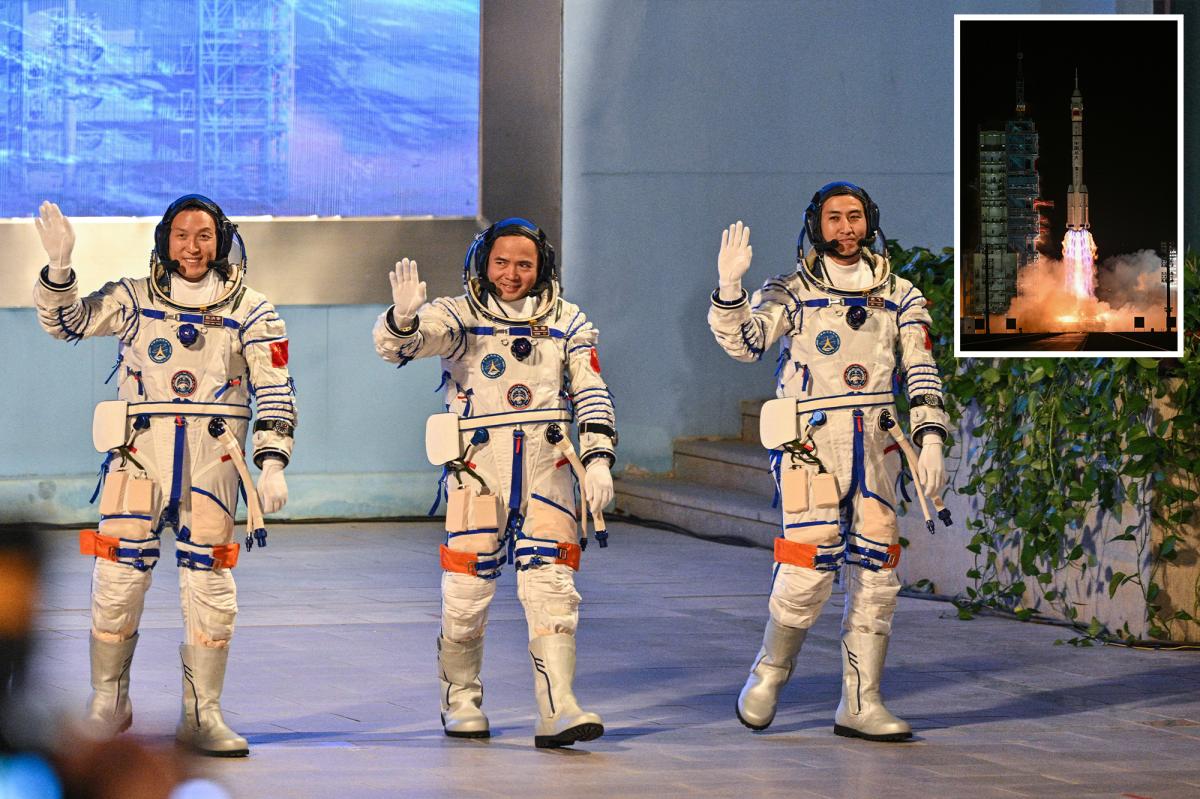Three Chinese astronauts are stuck in space after their shuttle was used to cart another group back to Earth, leaving them in the dust.
Astronauts Zhang Lu, Wu Fei and Zhang Hongzhang, all with the Shenzhou-21 mission, are marooned at China’s Tiangong space station until another shuttle is available to pick them up.
The only problem is that the China Manned Space Agency has only vaguely confirmed that the Shenzhou-22 spacecraft, the crew’s likely only viable way back home, would be launched at “an appropriate time in the future.”
The Shenzhou-21 crew are stranded at China’s Tiangong space station. AFP via Getty Images
The trio arrived at the Tiangong space station on Oct. 31 and were set to take over for the station’s incumbent Shenzhou-20 crew, which was made up of astronauts Wang Jie, Chen Zhongrui and Chen Dong, Space.com reported.
Each Shenzhou crew completes a six-month mission before being replaced by the next group of intrepid space explorers, according to NASA Space Flight. During the handover period, which typically lasts a few days, the incoming and outgoing Shenzhou vessels are both docked at the space station.
The Shenzhou-20 crew returned on the shuttle designated for the Shenzhou-21 team. AFP via Getty Images
The Shenzhou-20 crew was set to return to Earth on Nov. 5, but their return capsule was damaged by space debris.
“The capsule does not meet the safety requirements for a crewed return, Shenzhou-20 will remain in orbit and conduct relevant experiments,” the CMSA said in a statement.
So, after a nine-day setback, the Shenzhou-20 crew boarded the Shenzhou-21 shuttle and landed back on Earth on Friday, the agency said.
By their return, the Shenzhou-20 crew had officially completed the longest single spaceflight by any Chinese astronaut — a staggering 204 days, which could be topped by the Shenzhou-21 crew if the agency doesn’t come up with a way to bring them home.
The three astronauts are still expected to complete their six-month mission. AFP via Getty Images
It’s unclear why the CMSA opted to have the crew return on another team’s designated capsule rather than waiting for a new one.
Capacity could’ve played a part in the CMSA’s decision-making, since the Tiangong space station is roughly one-fifth the size of the International Space Station, which has six sleeping quarters, according to NASA.
There is a standby lifeboat that can be launched from the Jiuquan Satellite Launch Center to the Tiangong space station within nine days, Space.com reported. It’s also unclear why the CMSA didn’t resort to using it.
The Shenzhou-21 crew leader, Zhang Lu, was also part of the Shenzhou-15 team that completed a mission at the station in 2023. AFP via Getty Images
Space News cited reports of unconfirmed activity at the CMSA that could indicate it is planning to launch an unmanned Shenzhou-22 as early as Nov. 24.
The damaged Shenzhou-20 capsule that was supposed to bring its crew home will likely be detached from the space station and deorbited into the Pacific Ocean. While the CMSA is scrambling for alternatives on Earth, the Shenzhou-21 crew is still expected to complete their scheduled six-month mission.
With Post wires

